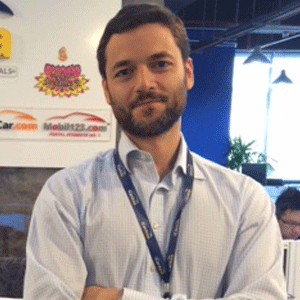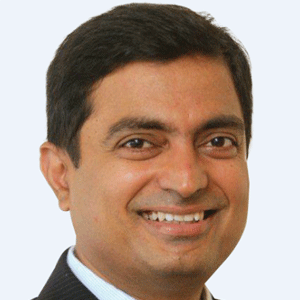THANK YOU FOR SUBSCRIBING

Attaining the Needs of Infrastructure Investment
Yong Chiang Neo, CIO and , Republic Polytechnic


Yong Chiang Neo, CIO
The Singapore Government has taken the lead in initiating the nation’s transition into a Smart Nation, which is defined as: “A Smart Nation means people and businesses are empowered through increased access to data, more participatory through the contribution of innovative ideas and solutions, and a more anticipatory government that utilises technology to better serve citizens’ needs.”
As this is a whole-of-nation initiative, Republic Polytechnic (RP), as an institute of higher learning, has strived to transform our campus into a Smart Campus. While concrete plans are still in the pipeline, one important development stands out; which is to usher in the Internet of Things (IoT). Essentially, this translates to deploying dummy and smart devices. For the former, we are referring to devices which are typically fixed at specific locations which sit there collecting specific data, sending them back to a central backend server or collection point.
Smart devices can take the form of mobile phones which have some apps running, collecting more broad range data and streaming them to the backend server.
The challenges are twofold, involving infrastructure catchup and security issues. Most IoT devices collect small sets of data each so the data footprint will be small, even in a large campus like RP, which I estimate will need at least 10,000 such devices deployed eventually. However, the new trend towards making things “smart” means also relooking at existing deployment, expanding the scope if necessary to meet the objective and user requirements. So if we relook at the IP Camera for instance, RP has 2,000 deployed and we will add another 500 or more over the next 2 years due to expansion and greater needs.
This will increase the digital content (video images) by 25%. Up till now, such content is streamed periodically to a storage server and is mainly used for security investigations purposes.
Going forward, however, to achieve a smart campus, the intent has to go beyond just storage and investigation. The content has to provide the capability to be streamed real time, analysed and to alert if necessary; i.e. video analytics.There are operational demands and resources needed for this. Since manpower crunch is a common issue in Singapore, surveillance work needs to evolve to become smart as well. Instead of leveraging on the dozen or so security officers who physically walk the grounds everyday, we need a smart system to monitor potential or suspicious problems such as a fight breaking out, a package left behind, a break in and cases of bullying etc. This places a demand on the infrastructure for real-time streaming and real time intelligence for analytics and physical infrastructure management. Video aside, the real fact of IoT is that these devices need to talk to a server for data collection. There are 2 means of communication, wireless and wired. The former leverages on existing or new separate wireless networks. The issue, specifically in RP, is that RP is a fully wireless campus. There is a likelihood of interference, although most IoT vendors claim otherwise. If we take the route of wiring up, it would be a huge potential cost. Right now, we have 2000 wireless access points,and if we take the route of wiring up, then the infrastructure setup will increase 5 fold.
The other key concern is security. With the proliferation of devices on our network, there is a greater opportunity for security compromises. For many years, CIO have been concerned about controlling what comes into the IT network. These are normally addressed by simple authentication and more recently, using mobile device management systems. Most of these devices are dummy, light weight and just do one or two things,collect data and transmit. They are not smart enough to supply ID and password, and even if they can,logistically, it becomes a nightmare if you have to deploy 10,000 of these on your premises! That aside, how
“Most enterprises are jumping onto the Internet of Things (IoT) bandwagon, thinking the device cost is marginal”
would an administrator keep track? Chances are most people will just use a common ID and password or keep a list on a notebook. The easier but still administratively challenging alternative is keeping track via the MAC address. This however does not address the potential of someone piggybacking on the device to gain access to the internal network.
Some vendors have taken note and are working on smarter devices while trying to meet the challenge of keeping them light weight, cheap and durable. Hopefully that will come to pass. Most enterprises are jumping onto the IoT bandwagon, thinking the device cost is marginal. That however is the tip of the iceberg and more investment is likely needed. High costs aside, I think there is a more urgent need to relook at the infrastructure and security architecture to meet the demands of this next wave of upcoming technology.












